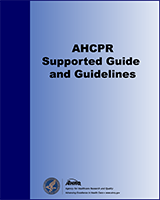From: 3, Guideline: Outpatient Care

Unstable Angina: Diagnosis and Management.
AHCPR Clinical Practice Guidelines, No. 10.
Braunwald E, Mark DB, Jones RH.
Rockville (MD): Agency for Health Care Policy and Research (AHCPR); 1994 May.
NCBI Bookshelf. A service of the National Library of Medicine, National Institutes of Health.